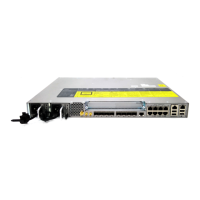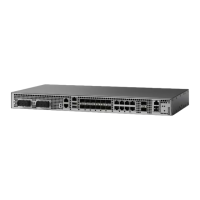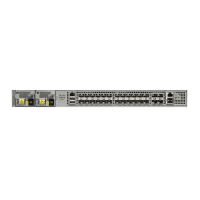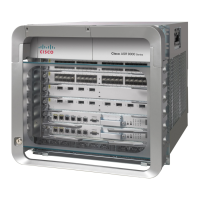Guidelines for DC-Powered Systems
Basic guidelines for DC-powered systems include the following:
•
Each chassis power supply should have its own dedicated input power source. The source must comply
with the safety extra-low voltage (SELV) requirements in the UL 60950, CSA 60950, EN 60950, and
IEC 60950 standards.
•
The circuit must be protected by a dedicated two-pole circuit breaker. The circuit breaker should be
sized according to the power supply input rating and local or national code requirements.
•
The circuit breaker is considered the disconnect device and should be easily accessible.
•
The system ground is the power supply and chassis ground.
•
Do not connect the DC return wire to the system frame or to the system-grounding equipment.
•
Use the grounding lug to attach a wrist strap for ESD protection during servicing.
Preventing Power Loss
Use the following guidelines to prevent power loss to the router:
•
To prevent loss of input power, ensure that the total maximum load on each circuit supplying the power
supplies is within the current ratings of the wiring and breakers.
•
In some systems, you can use an UPS to protect against power failures at your site. Avoid UPS types
that use ferroresonant technology. These UPS types can become unstable with systems such as the Cisco
ASR-920-10SZ-PD Router, which can have substantial current-draw fluctuations due to bursty data
traffic patterns.
Use the information in the Table 1 to estimate the power requirements and heat dissipation of a Cisco
ASR-920-10SZ-PD Router based on a given configuration of the router. Determining power requirements is
useful for planning the power distribution system needed to support the router.
Cisco ASR 920-10SZ-PD Aggregation Services Router Hardware Installation Guide
9
Installing the Cisco ASR-920-10SZ-PD Router
Guidelines for DC-Powered Systems
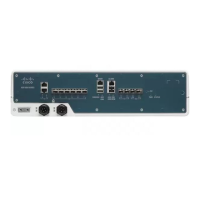
